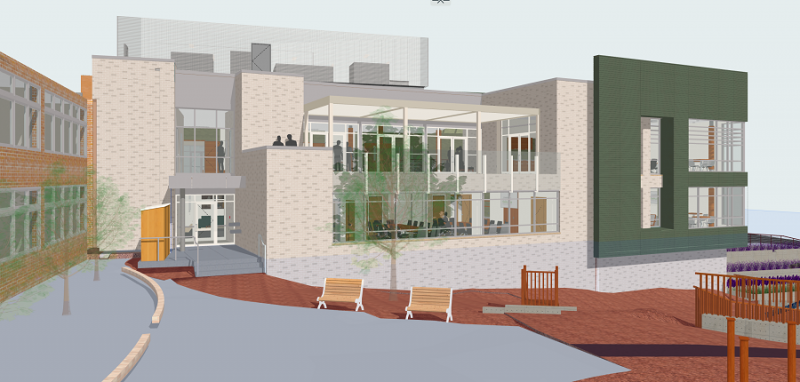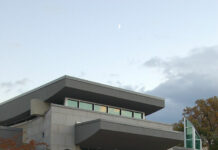
They were bursting at the seams at Temple Sinai.
The religious school was pulling double shifts because there wasn’t enough room to teach everyone at once. Closets were converted into offices. Offices were subdivided to make room for more staff. A big board with Post-It notes let everyone at the 1,140-member family Reform congregation know who was reserving which space for which meeting, program or class.
But the building, built in the District in the late 1950s in the midcentury red-brick utilitarian style, was heading for a change.
“I’ve been here since 2010,” says Rabbi Jonathan Roos, “and there had already been whispers about it.” The congregation decided it would do no good to tinker around the edges. “We realized we needed to build capacity.”
At Temple Sinai, they had three choices: raze the building and start over; move the whole congregation to another location; or build an addition.
They decided on the third option and, in 2018, hired a consultant to find out how much money the congregation could raise toward an expansion. The result is a $10 million project “more or less, when all is said and done,” says Ken Jaffe, executive vice president and the project’s lay leader.
The project includes updates on the sanctuary and social hall, both of which are complete, and the construction of a two-story “South Addition,” projected to be finished in the fall of 2023. On the first floor: meeting, lounge and “flex” spaces. Above: A meeting room and a terrace, which Roos and Jaffe describe as a destination space for social events.
“We are looking to maintain this vibrant community,” Jaffe says. “We need a place for the people.”
The cost of the project “also includes a long-term investment in programs,” Roos says. Temple Sinai’s social justice activities are being integrated into the Davis Center for Social Justice. A program to support pastoral care is “in the works,” he adds.
It was all supposed to be done by the second half of 2020. The pandemic put a pause on construction. But it also gave Temple Sinai time to think again about what a synagogue needs to be in light of all the improvisations and innovations the pandemic gave birth to. That included how a congregation looks at its space — when it doesn’t know if it’ll be able to meet in person, or stand any closer than six feet apart.
An HVAC system that filters air and boosts circulation was now a necessity. Outdoor space suddenly became a desired commodity.
“Every synagogue has an outdoor sanctuary,” Roos says, “and they use it for one service a year.”

But when synagogues were finally able to meet, even parking lot asphalt became hallowed ground for services, for classes, for movie nights and for meals. Temple Sinai was built with elongated courtyards that let light into the building but were otherwise unused. Now, one of the courtyards is being converted into an outdoor classroom.
The sanctuary was modified and upgraded in ways that pull the temple out of the 1950s.
“The Bride’s Room will be the Wi-Fi control space,” Roos says of a small room at the back of the sanctuary. “A bride hasn’t used it in 25 years.”
In the sanctuary, fixed pews from the days of the Eisenhower administration were replaced by movable chairs. A tetchy lift to the bimah for people who use wheelchairs or have difficulty climbing stairs was superseded by an elegant ramp that leads to a semicircular bump out at the front of the bimah, making the area less a stage and more a slightly raised part of the congregation.
The changes are subtle, Roos says. “People who grew up here don’t think anything has changed.”
Outside, workers are putting up fencing, clearing trees and preparing the ground to build the addition. Roos looks at it and thinks of how the pause left Temple Sinai farther ahead, rather than behind.
“We wanted flexibility,” he says. “That has become much more important than we ever imagined.”






It would have been helpful for the writer or editor to have indicated where Temple Sinai is located: District? Maryland? Virginia? Street address would be a welcome bonus. Or, did they assume that all readers know where all the synagogues in the area are located?
My previous comment referred to the print edition, which is where I read the article. I note that the District is mentioned in passing in the online version.
Okay, I have reread the print version and note that the District is mentioned in passing but it would still be useful to know we’re in the District this temple is located.
We’ll go better than that. Interested folks can find out much more about Temple Sinai on their website:
https://templesinaidc.org/
–David Holzel, Editor